
Comprehensive Environmental Risk Research Program
Research Program on Comprehensive Assessment and Management of Human and Ecological Health Risk Caused by Chemicals and Other Pollutomes.
In this program, we are conducting research to promote the comprehensive risk assessment and management of chemicals and the total of all forms of pollution that can harm human and ecological health (i.e., the pollutome). To assess and manage the greater part of chemicals originating from human activities, we expanded the target chemicals to all chemicals of concern and considered vulnerable groups and life stages of humans and other organisms. In addition, we upgraded our comprehensive measurements and mathematical models to better assess those effects and risks that have been hard to quantify. As a result of these efforts, we are helping to establish comprehensive health risk indexes and ecological risk indexes.
Go to Comprehensive Environmental Risk Research Program website
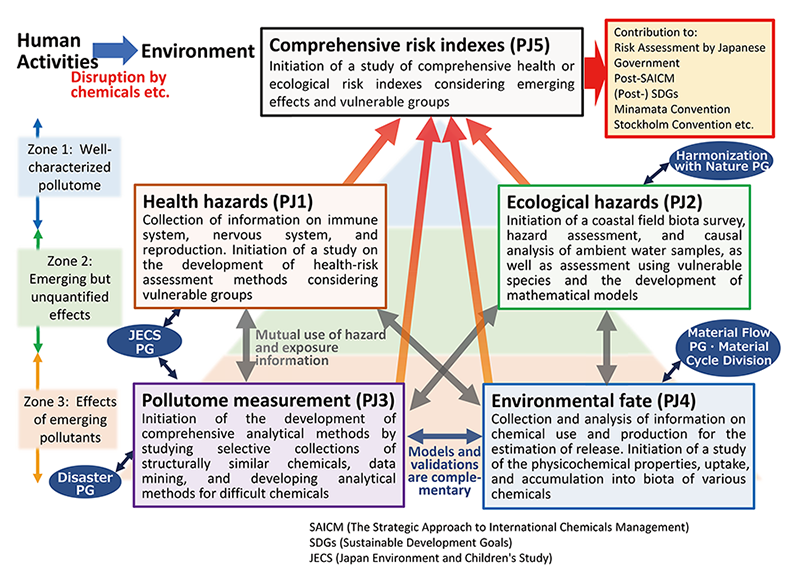
5 projects of the research program
PJ1 Health Hazards Project
Health hazard assessment considering the real-life environment and vulnerabilities
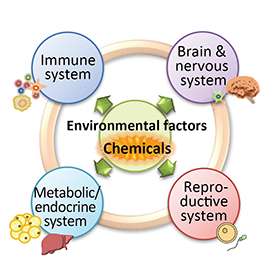
The health effects of chemicals vary with exposure level and sensitivity, but their effects in the real world are not fully understood. The Health Hazards Project will conduct systematic research on the health effects of environmental factors, including chemicals, over the lifetimes of present and future generations. We will evaluate the health hazards, considering the real-life environment and vulnerabilities, find mechanism-based impact indicators, and propose new evaluation and prediction methods. These contributions will facilitate the development of comprehensive health risk indexes.
PJ2 Ecological Hazards Project
Ecological hazards and factor analysis considering vulnerabilities
There have been many studies on the ecological impacts of chemicals and other pollution factors, but their causal analysis has been insufficient. To understand the factors that cause such impacts and evaluate control measures, we collaborate on field surveys of biota, laboratory experiments, and mathematical models. By focusing on vulnerable species and life stages, we investigate ecological hazards. Comprehensive ecological risk indexes are also developed to assess the combined effects of various factors.
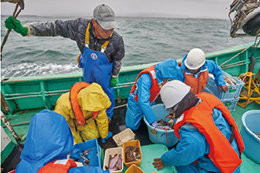
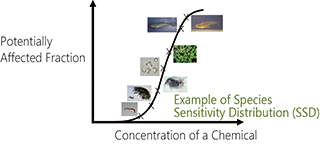
PJ3 Pollutome Measurement Project
Comprehensive pollutome measurement
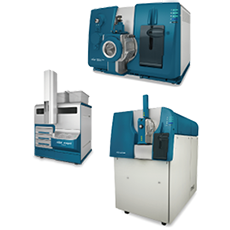
This project develops methods to measure and understand exposure to all environmental chemical substances of concern. We will also develop new methods of analyzing chemical substances that have been hard to identify and quantify, as well as establish a scheme that will facilitate identification of causative factors when new effects become apparent. To efficiently search for contributors to bioactivity, we will also develop selective collection materials and data analysis methods for substances that share common structures.
PJ4 Environmental Fate Project
Modeling the environmental fate of the pollutome
We are developing and improving methods to derive emission inventories, physicochemical parameters, bioaccumulation properties, and multimedia models to evaluate the environmental fate of all substances of concern for which we have only limited risk evaluation information; these methods will contribute to exposure assessments. These methods include a novel emission estimation method, focusing on substances categorized into the same usage, and bioaccumulation models applicable to polar and ionic organic substances.
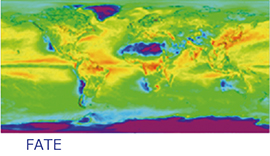
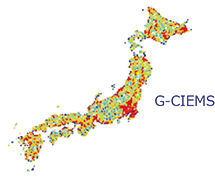
PJ5 Comprehensive Risk Indexes Project
Development of comprehensive health risk and ecological risk indexes
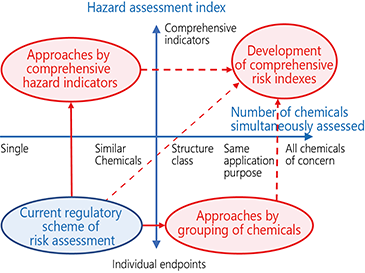
This project proposes and develops comprehensive health risk and ecological risk indexes considering factors not currently involved in quantitative risk assessment schemes. The factors include toxic effects that are difficult to assess quantitatively, consideration of vulnerable populations, environmental fate of chemical mixtures and degraded products, and grouping of similar substances. Scientific information and findings from the four other PJ projects are being assembled, and comprehensive risk indexes will be proposed. The outcome of the project is contributing to both domestic and international environmental policies.
